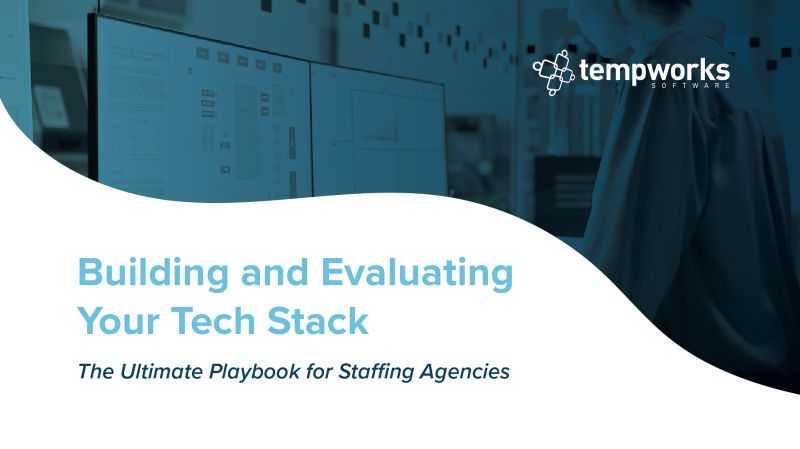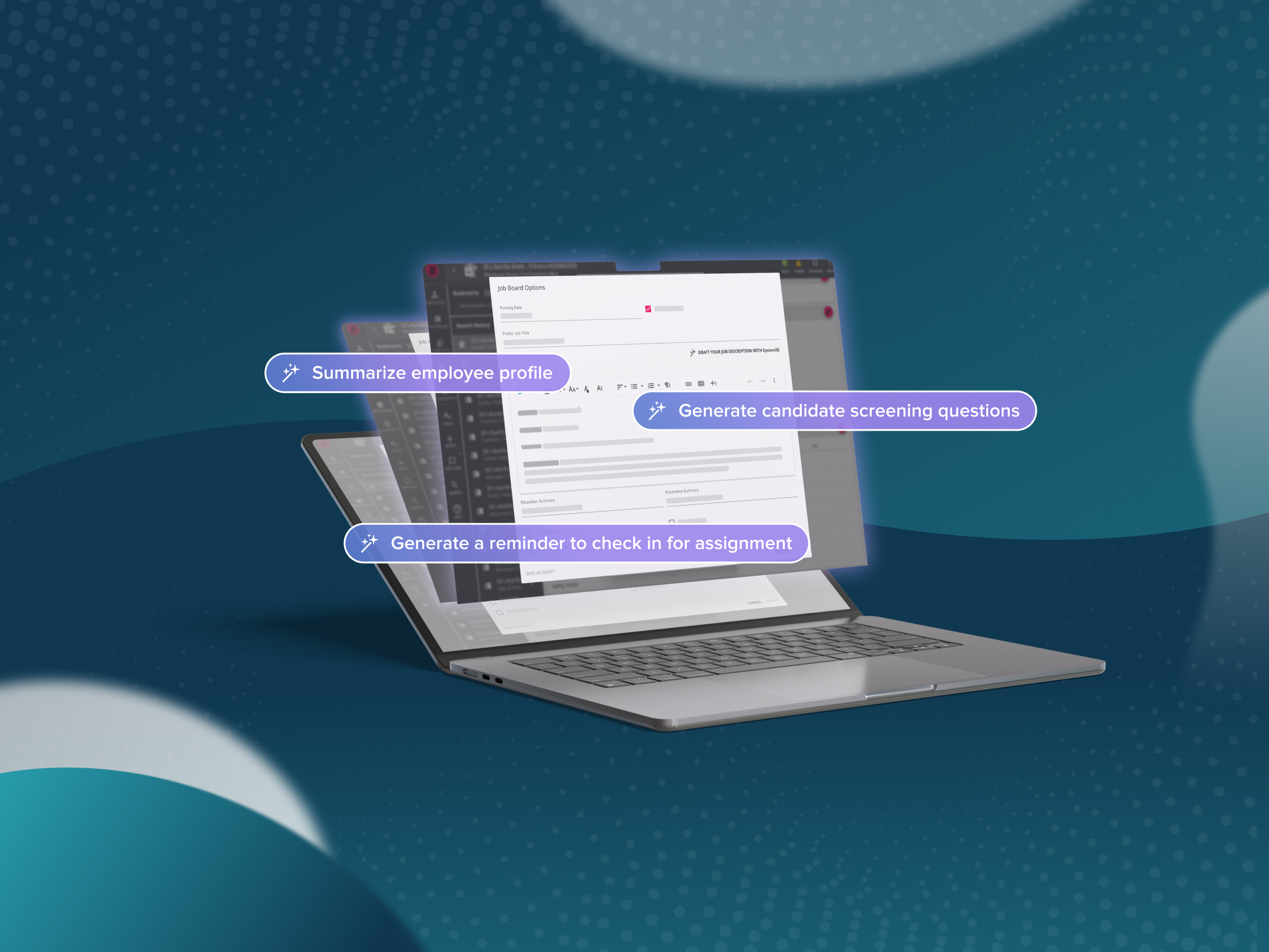AI tools like TempWorks’ new SystemIQ feature are a powerful way to supercharge the efficiency and effectiveness of recruiter (and other staffing professional) tasks.
Oftentimes we take for granted people’s comfortability with new technologies. Without understanding the ins and outs of generative AI, it can be a little bit like driving a Ferrari stuck in first gear.
Of course, generative AI has a number of applications throughout the staffing industry and within organizations, but for the purposes of this guide we’re going to focus in on the utility for recruiters. We’ll cover the methodology behind writing an effective prompt, sample prompt writing, explore the pre-built prompts within TempWorks’ SystemIQ tool and show how to make them work best for you.
An Overview on Prompts
Beginning at the most basic level, a prompt is what you enter into a chat dialogue with a generative AI engine to elicit a response. Much like a browser search, the magic of prompts lies in specificity. If you were to search “dinner” you’d get a dictionary definition of dinner and maybe some history on the origins of the meal, versus searching “Thai restaurants in Greenville South Carolina”.
The crucial elements of a prompt are as follows (RATT):
- Role: What persona should the AI adopt as it generates your content?
- Audience: Who is the message for?
- Task: What will the AI engine create?
- Tone: What descriptive words can you use to guide the way the content is presented?
How to Write a Successful Prompt
Within SystemIQ, users have the ability to choose between six premade prompts (more on these later). Additionally, users have the ability to start from scratch with a blank generative AI dialogue. Let’s start with AI in its most customizable form to see what a good prompt might look like.
SystemIQ’s premade prompts are mainly focused on the talent journey, but recruiters and staffing firms have many other potential applications for generative AI, including strategic insight and guidance, research and preparation, marketing, and a whole lot more. Let’s use an example of a recruiter at a staffing firm looking to generate ideas and content for a recruiting outreach event at a local community college.
Remembering RATT, the prompt could look something like this:
“I am [a recruiter at a staffing firm] preparing for an upcoming recruiting outreach event at a local community college; please provide a [promotional strategy for the event with sample pieces of content] that can be used to attract an audience of [college students interested in nursing], keeping the tone [light and hopeful].”
Results for a prompt like this may yield pre, during, and post-event communication streams, ideas for target platforms, even ideas for social media copy or banners that could be used at the event.
Perhaps you want the event to be a bit more regionally specific. You could augment the prompt like so:
“Please tailor messaging specific to the Greenville, South Carolina area, and provide 3 sample emails that could be used as follow-ups for the event, including A/B tests for subject lines for each email.”
You find these results are a great jumping-off point to put your own spin on the content, such as including your personal contact information and your firm’s branding.
This example is one of thousands of use cases for generative AI within staffing. Remembering role, audience, task, and tone can serve as a solid foundation that can be refined to get the exact results you’re looking for.
Making the Most of Predefined Prompts
One key feature of SystemIQ is its integration within TempWorks’ Beyond software. At key points within the staffing workflow, you’re able to launch SystemIQ to quickly generate relevant content using information from within your database.
The six built-in SystemIQ prompts are:
- Summarize employee profile: Used to create a high-level overview of an employee to better present them to hiring managers.
- Generate a job description: Used to quickly build a compelling job description using relevant, specific position details.
- Generate candidate screening questions: Pulls data from the job record to craft illuminating interview questions.
- And three different common talent communication touchpoints that save recruiter time:
- Generate a reminder to provide missing required documents
- Generate a reminder to check in for assignment
- Generate a rejection letter
The main benefits of using a tool like SystemIQ are twofold. First, all of your data is kept within a controlled environment. Instead of copying relevant data from your database, pasting it ChatGPT, and then copying those results back into your CRM or communications platforms, you’re able to do everything right from your staffing software. This not only protects your business from any security breaches and mitigates the risk of sensitive employee data leaking outside of your organization, but it simplifies workflows and removes unnecessary steps.
The other key benefit is that it makes the information within your database actionable. Staffing firms are sitting on mountains of client, employee, and job data, but the time it takes to make that information usable is cumbersome at best. SystemIQ turns all that data into relevant content in a few clicks.
For example, creating interview questions can often be time consuming, to the point where many hiring managers will default to a set of generic questions that leave candidates feeling disengaged and fail to yield any insight into the candidate’s preparedness or qualification for the role.
Within SystemIQ, a hiring manager can select the employee’s record and the job description as information sources to pull from, and then generate questions that merge those two sources into highly relevant, job-specific questions.
And even within predefined prompts, results can still be further refined. For example, if a set of interview questions for a forklift operator role needs to be adjusted to be more professional rather than conversational, that refinement can be done in a matter of seconds.
The beautiful thing about generative AI is that you adapt to it as much as it adapts to you. Working within tools like SystemIQ gives you the understanding of what type of prompt yields a successful result for your needs. The more you use it, the better you get at it. And mastering generative AI can have a massive impact on employee engagement and recruiter efficiency.



